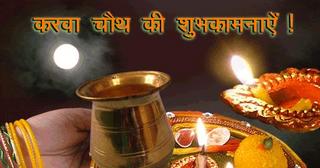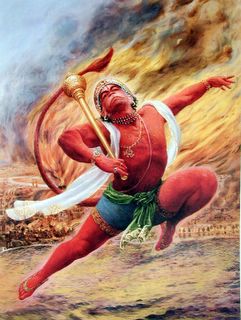 Though Karva Chauth is a day marked with neither food nor water, this festival is quite popular among the newlyweds.
Though Karva Chauth is a day marked with neither food nor water, this festival is quite popular among the newlyweds.The Start Of The Day
On this day the women get up before sunrise. They worship Shiv-Parivaar (Shiva, Parvati, Ganesh and Kartikeya) and the moon. The blessings of the Gods are invoked for longevity and prosperity of their husbands and children. Mothers-in-law give their daughters-in-law sumptuous food called 'Sargi' to eat before sunrise, as the fast starts before sunrise and ends only after worshiping the moon at night. It is a tough fast, as the women do not take any food or water.
Dressing Up
In the evening, the women to cherish the joy of adorning bridal finery. Many times, the newly wed wear their wedding dress on this auspicious occasion, usually the ghagra-choli or Banarsi saris, embellished with the old-new shimmer of gold, diamonds and rubies. After dressing up, she receives gifts from the mother-in-law.
Evening Puja
Before evening, the married woman receives the baya or a basket full of goodies from her mother, which is meant for the mother-in-law. The basket contains sweets, mathadi, fruits and a sari. Before the sun sets, most of the women in a locality gather in one house and prepare a corner for the puja. This puja chowk is beautifully decorated and a small platform is prepared against a wall. On this, the image of Gauri Mata or Goddess Parvati is placed.
The Process Of Puja
The women sit around this image with their bayas. Each woman also places a karva or a pitcher full of water and seven pieces of pua in front of her. It is adorned with kharia, aipun and a little roli. A red thread is tied around the karva. At the beginning of the puja, women apply the roli teeka to Goddess Gauri and also to themselves. With the thumb and the third finger of the right hand, water is sprinkled on the image of the goddess. The same procedure is repeated with aipun and roli . Lastly, rice is showered on the image.
Narration of Vrata Katha
An elderly woman of the family narrates the legend of Karva Chauth. Even a widow can narrate this story. The women then pray for the long life and welfare of their husbands. While chanting the prayers, they pass their bayas from one to another. The wait for the moon rise begins after sunset, and as soon as the moon is sighted, prayers are offered to the moon. The fasting women first observe the moon through a sieve and then break their fast. The first sip of water and the first morsel of food is offered by the husband.
Finally, after a what seems like a long day, a sumptuous dinner follows.
Source: www.KarwaChauth.com

No comments:
Post a Comment